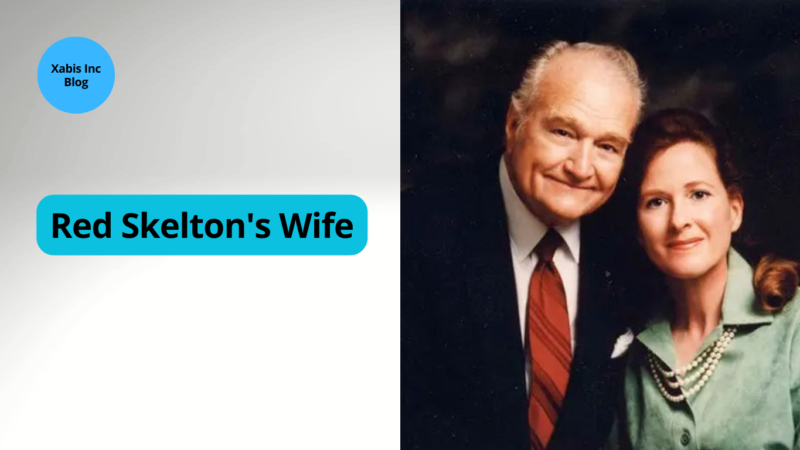Richard “Red” Skelton (July 18, 1913 – September 17, 1997) was an American entertainer best known for his national radio and television shows between 1937 and 1971, particularly as the host of “The Red Skelton Show.” Known for his comedic and pantomime skills, Skelton also had a successful career as an artist. His net worth at the time of his death was estimated to be around $2.5 million from his art sales alone, and he was 84 years old.
What Was Red Skelton’s Early Life Like?
Born in Vincennes, Indiana, Skelton was the youngest of four sons to Joseph Elmer and Ida Mae Skelton. His father, a former clown with the Hagenbeck-Wallace Circus, passed away two months before Red was born. Growing up in poverty, Skelton worked various jobs from a young age to support his family. His early interest in entertainment was sparked when comedian Ed Wynn bought all of Skelton’s newspapers, allowing him to watch a show and meet the performers.
How Did Red Skelton Begin His Career in Entertainment?
Skelton’s career began at the age of 10 when he joined a traveling medicine show, honing his comedic and pantomime skills. By 1929, he was performing on the burlesque circuit and later joined vaudeville in 1934. Skelton’s breakthrough came with the “Doughnut Dunkers” routine, which he performed with his first wife, Edna Stillwell. This act led to engagements in vaudeville, radio, and films.
What Was Red Skelton’s Radio Career Like?
Skelton’s radio career took off in 1937 with a guest appearance on “The Fleischmann’s Yeast Hour,” which led to him hosting “Avalon Time” in 1938. By 1941, he was hosting “The Raleigh Cigarette Program,” where he created many of his famous comedy characters. Skelton continued to have a regular radio program until 1957, becoming one of America’s favorite radio personalities.
How Did Red Skelton Transition to Film?
Skelton made his film debut in 1938 in “Having Wonderful Time,” alongside Ginger Rogers and Douglas Fairbanks Jr. Throughout the 1940s and 1950s, he appeared in numerous films, including “Ship Ahoy” (1941), “I Dood It” (1943), “Ziegfeld Follies” (1946), and “The Clown” (1953). His physical comedy and unique style made him a beloved figure in Hollywood.
What Made “The Red Skelton Show” a Success?
Eager to work in television, Skelton premiered “The Red Skelton Show” on September 30, 1951, on NBC. By 1954, the show moved to CBS and was expanded to an hour in 1962. Skelton’s ability to create memorable characters like Freddie the Freeloader and Clem Kadiddlehopper, combined with his pantomime skills, made the show a hit. Despite high ratings, CBS canceled the show in 1970, believing more youth-oriented programs were needed.
What Was Red Skelton’s Later Career Like?
After his television show ended, Skelton continued to make personal appearances, performing up to 125 times a year. His passion for painting, particularly clowns, became a significant source of income. Persuaded by his wife Georgia in 1964, Skelton began selling his artwork, earning approximately $2.5 million annually from lithograph sales.
What Was Red Skelton’s Personal Life Like?
Skelton married Edna Stillwell in 1931, who played a crucial role in managing his career and writing his material. They divorced in 1943, but Edna continued to manage his career. He married Georgia Maureen Davis in 1945, and they had two children, Valentina and Richard. Tragically, Richard died of leukemia in 1958, deeply affecting Skelton and his family.
How Did Red Skelton Spend His Final Years?
In his later years, Skelton focused on his painting and live performances. Despite his bitterness over the cancellation of his show, he made occasional television appearances. Skelton died on September 17, 1997, at the age of 84, leaving behind a legacy of laughter and artistry. His widow donated many of his personal and professional effects to Vincennes University, where they are displayed at the Red Skelton Museum of American Comedy in Vincennes, Indiana.
What is Red Skelton’s Legacy?
Red Skelton’s 70-year career as an entertainer spanned radio, film, and television, touching the lives of three generations of Americans. Known for his ability to make people laugh, he defined his life’s work as being a clown, capable of doing everything. His contributions to entertainment and art continue to be celebrated, ensuring that his legacy endures.









